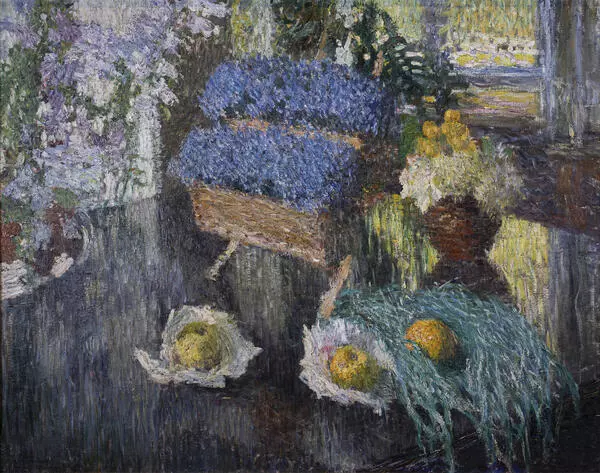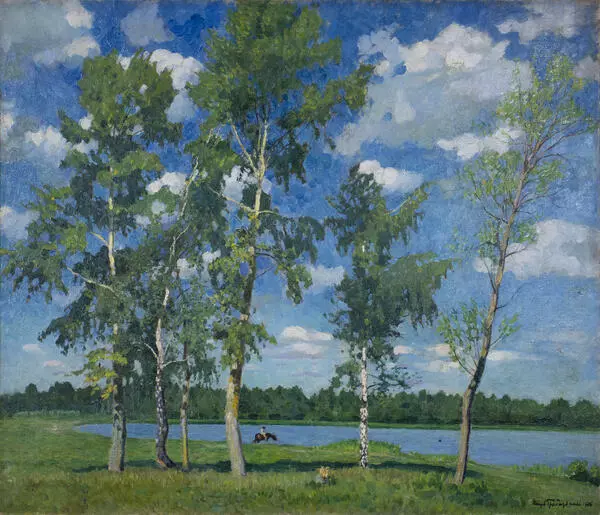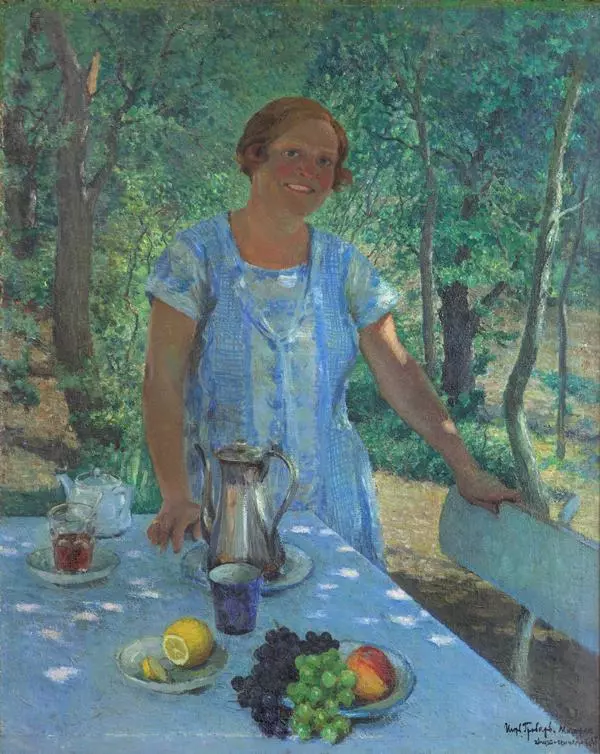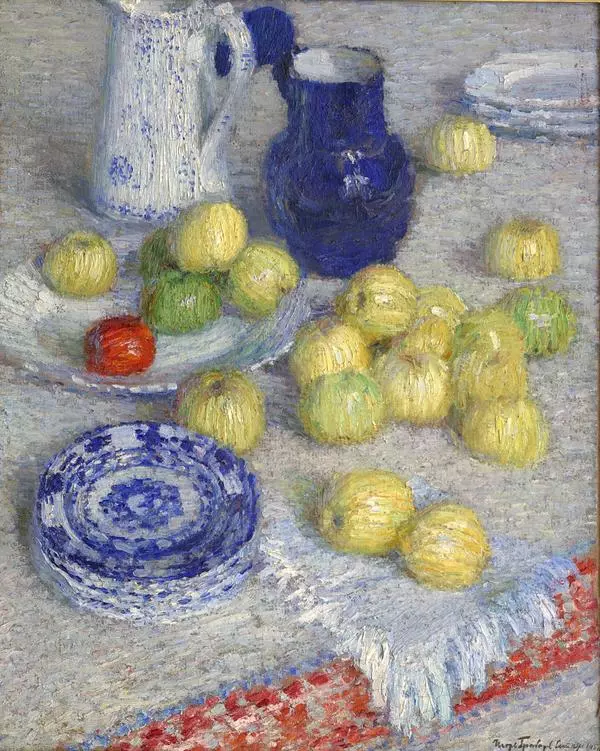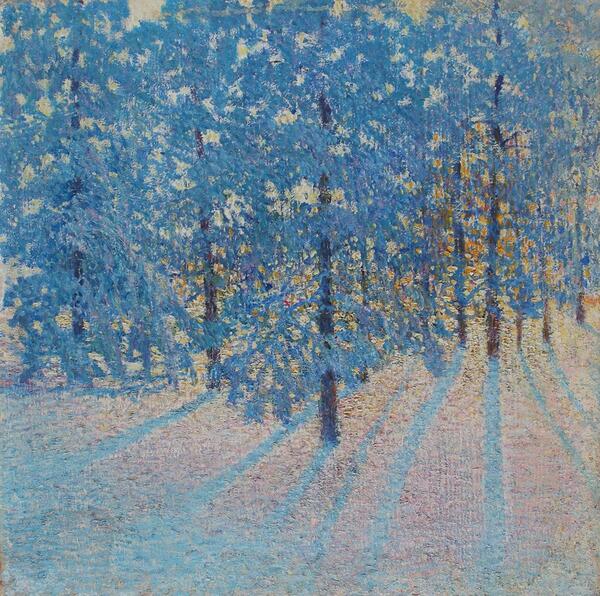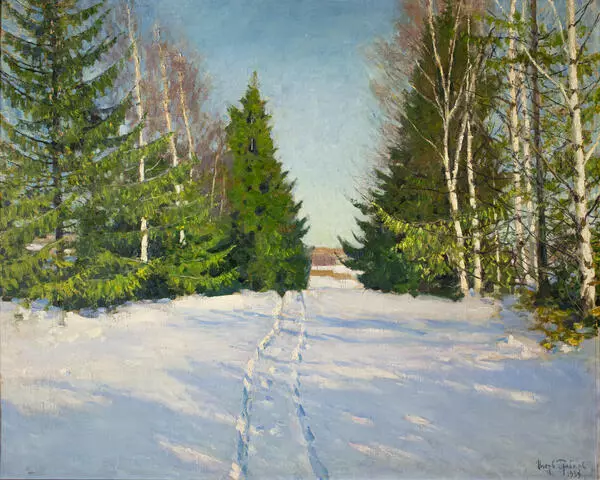Igor Emmanuilovich Grabar was a Russian and Soviet painter, restorer, art historian, art theorist, educator, museum worker and teacher. He was born in Budapest in 1871.
From the age of 11, Igor Grabar studied in Moscow at the Imperial Lyceum of Tsesarevich Nicholas. In 1893, he graduated from the Law Faculty of St. Petersburg State University, but chose a career of an artist.
In 1894, Igor Grabar entered the Imperial Academy of Arts, where in 1895, he began studying in the studio of the painter Ilya Repin. In 1896, he left for Europe and entered the private school-studio of artist Anton Azhbe in Munich.
In 1901, Igor Grabar returned to the Russian Empire, and in 1903 he moved to Moscow permanently.
The heyday of Grabar’s painting came in the first decade of the 20th century. The artist was close to the Impressionists in his landscapes and still lifes. In 1904, he created his famous landscapes “March Snow”, “Fading Day” and “February Azure” in the Dugino estate near Moscow.
Besides painting, the artist was engaged in research and educational work. He wrote about art in the magazines “Mir Iskusstva”, “Vesy” and others.
In early 1913, the Moscow City Duma elected him a trustee of the Tretyakov Gallery, a position he held until 1925. Thanks to him, the museum underwent a redesign: the halls were reorganized, partitions and panels were removed. The exhibition was based on chronological and monographic principles.
After the Russian February Revolution in 1917, Igor Grabar organized the Union of Moscow Art Depositories and became its chairman. The artist fought against the plundering of museums and private collections. Between 1918 and 1927, on Grabar’s initiative, 18 expeditions to various cities of Russia were held, the purpose of which was to remove icons from closed and looted churches.
From 1921, Grabar was a professor at Moscow State University, where he gave a course of lectures on the theory and practice of scientific restoration at the Department of Art.
In the fall of 1944, the Institute for the History of Art and the Protection of Architectural Monuments at the Department of History and Philosophy of the USSR Academy of Sciences, now the State Institute of Art History, was established under his leadership. The mission of the team was to prepare a multi-volume edition of the “History of Russian Art”.
Igor Grabar died in 1960 and was buried at the
Novodevichy Cemetery in Moscow.



